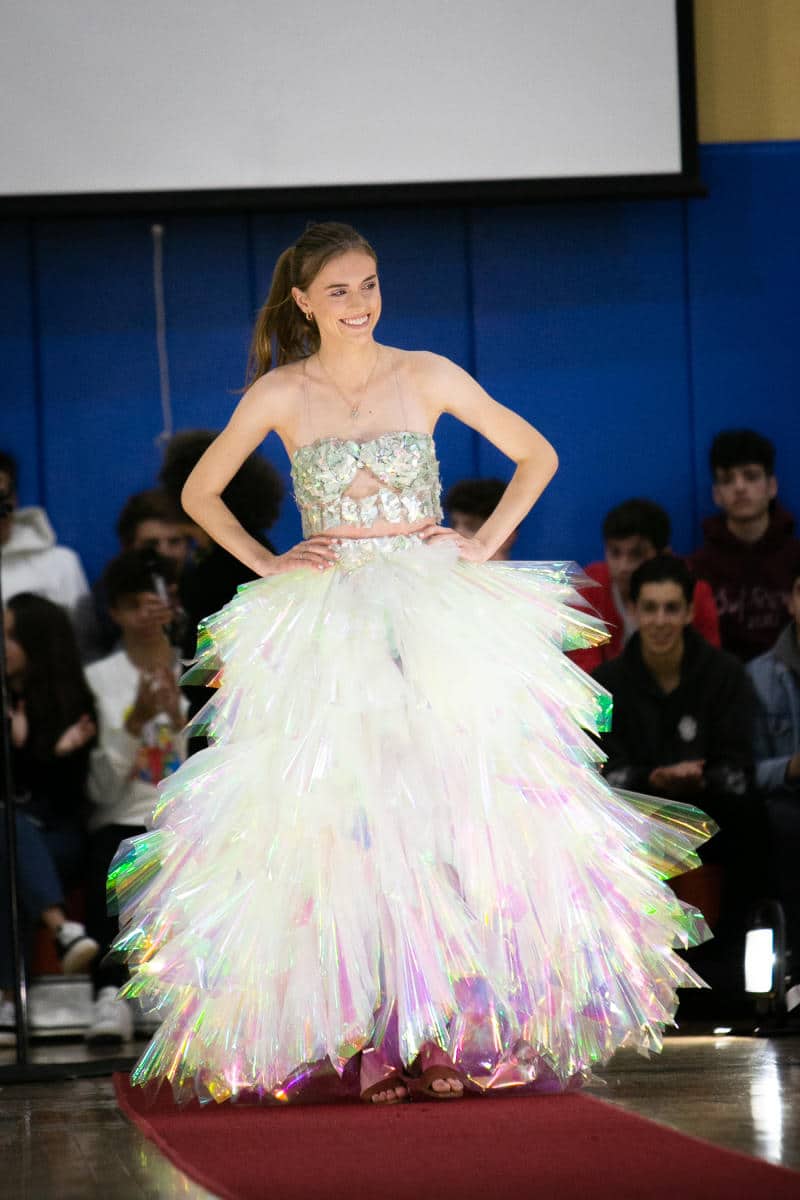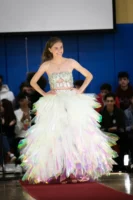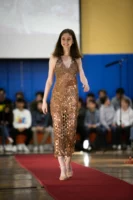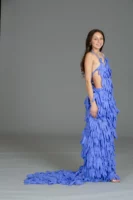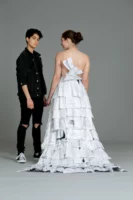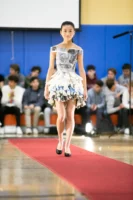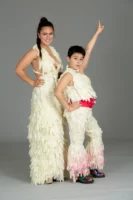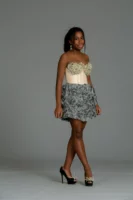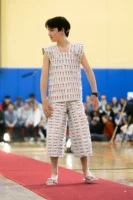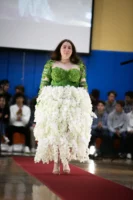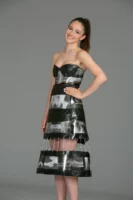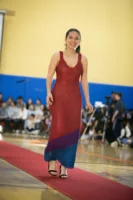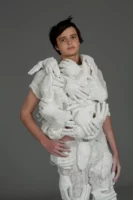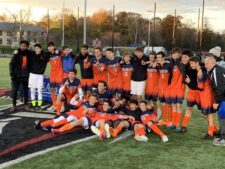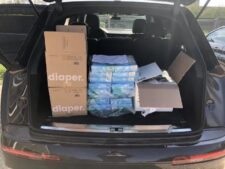The first dress to come down the runway is iridescent. Light bounces off dozens of sheets of cellophane, folded and layered to form the full skirt of a ball gown. The bodice — “smashed CD’s in a resin mold,” as Anna M. ’19, the model and designer of the dress, explains — glimmers with each step.
This isn’t the Met Gala, but the wow factor is on par.
For months, students at ECFS have been designing and constructing elaborate outfits to present at the annual Fashion Show. Participants have free rein to use any colors, silhouettes, or inspirations they want. The one stipulation? They cannot use fabric.
What results is a showcase of everything and anything repurposed in the name of fashion. Candy wrappers — check. Sanitary napkins — check. Deflated beach balls, Cheerios, the plastic grass that comes in sushi boxes — check, check, and check. Lily G. ’21’s gown is made of deconstructed wisteria flowers, the leaves woven into lace-like sleeves and strands of blossoms billowing out of the skirt in a floral fringe. Skyler M. ’22’s dress is made of purple latex gloves draped in a frilly, flouncy silhouette that ends in a subtle train.
Not all looks are successful at first. Halfway through the design process, some students find that a material or a silhouette isn’t working and go back to the drawing board. Nancy Fried, Fieldston Upper art teacher and director of the fashion show for 15 years, notes that this resilience is one of the qualities she admires most in her students. “Some of these kids — when their dress or pants fall apart and they have spent absolutely months — they don’t complain, and they just go in another direction. This is what Fieldston is about: being able to build something when it doesn’t work and make it work.”
The challenge of transforming quotidian objects into sartorial statement pieces brings many students back year after year. After wearing an outfit of paper clips last year, Rachel S. ’20 continues her metallic theme with a sheath dress made entirely of jump rings, the small wire circles typically used in jewelry. Isabel C. ’22, another Fashion Show veteran, has constructed a similarly slinky number out of thousands of pennies, each linked to the next through one of six holes hand-drilled into the metal.
In the gym, over 80 students strut down a catwalk to the beats of Billie Eilish and Lil Wayne as hundreds of their peers and teachers watch on. The hand of the designer is always present in fashion, but some students have inserted themselves into their work, literally. After suffering a pelvic injury, Maya F. ’19 has recycled her X-rays in a sleek A-line dress, its glinting metal accents an homage to — and a reclamation of — the metal implants in her body. Matthew F. ’20 closes the show with a sculptural top made of plaster molds of his hands.
This is what Fieldston is about: being able to build something when it doesn’t work and make it work.
Most of the students to walk the runway are in Fieldston Upper, but some of the models are from the younger divisions — generally siblings who emerge in matching outfits. The ones to watch are the precocious visionaries who, from as young as 6th Grade, are already creating their own designs. Jake L. ’24, who made his debut in the Fashion Show last year, returns with a shirt and shorts made of Heinz ketchup packets, the iconic bottle repeated hundreds of times across the ensemble. Andy Warhol would approve.
And who knows? One of these budding couturiers may one day be featured at the Met Gala.
